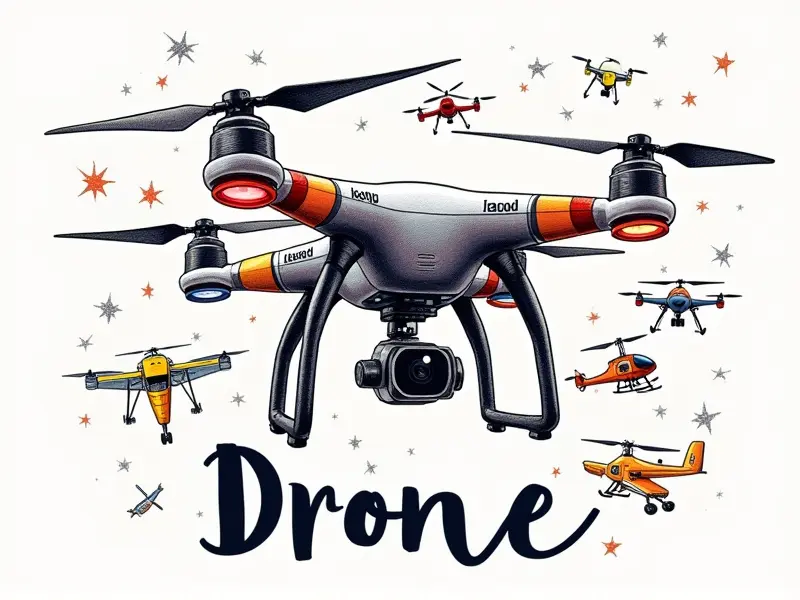Can drones take photos at night?

Drones have revolutionized aerial photography, offering photographers and enthusiasts the ability to capture stunning images from unique perspectives. But can drones take photos in low light conditions? This article delves into the world of nighttime drone photography, exploring its challenges, techniques, and future potential.
Secrets of Taking Photos With Drones at Night
Photographing with drones at night presents a unique set of opportunities and challenges. The key to success lies in understanding your equipment's capabilities and the environment you're shooting in. High ISO settings can help capture more light, but they also introduce noise into images.
Best Practices for Nighttime Drone Photography
- Choose the Right Equipment: Invest in a drone with good low-light capabilities and high-quality lenses.
- Leverage High ISO Settings: Increase your camera's sensitivity to light by raising the ISO, but be mindful of noise levels.
- Stabilize Your Shots: Use image stabilization features or external stabilizers to reduce blur in low-light conditions.
Exploring Night Sky Photography with Drones
Night sky photography is a captivating genre that benefits greatly from the flexibility of drones. Capturing star trails, meteor showers, and other celestial events requires patience and precise planning. Understanding your drone's limitations in terms of battery life and flight duration is crucial.
Can Drones Take Clear Photos in Low Light?
The ability to capture clear photos in low light depends on several factors including the quality of the camera, lens, and image processing software. Modern drones are equipped with advanced sensors that can produce decent images even in very dim conditions, but there's always room for improvement.
Shooting Stars: Night Photography with Drones
Capturing starry skies requires a combination of technical skill and creativity. Long exposure times are often necessary to capture the beauty of the night sky. Experimenting with different shutter speeds and ISO settings can yield stunning results, but be prepared for trial and error.
Techniques for Shooting Stars
- Bulb Mode: Use bulb mode to control exposure time manually.
- Interval Photography: Set up your drone to take photos at regular intervals for star trails and meteor showers.
- Lightsaber Effect: Capture the movement of stars by panning or tilting your drone during a long exposure.
The Future of Night Photography: Drones
The future of nighttime photography is bright, with drones playing an increasingly significant role. Advancements in camera technology and software are making it easier to capture high-quality images even in the darkest conditions. Expect more features like improved noise reduction algorithms and better low-light performance.
Illuminating the Night: Drone Photography Techniques
Light painting is a technique where you use artificial light sources to paint with light, creating unique patterns and effects. This can be particularly effective in nighttime drone photography when combined with long exposure settings.
Light Painting Tips
- Experiment With Light Sources: Use LED lights, glow sticks, or other portable light sources to create dynamic images.
- Play With Angles and Perspectives: Utilize the drone's maneuverability to capture light painting from different angles.
Moonlit Moments: Capturing Night Scenes with Drones
The moon provides a natural source of illumination, making it an ideal time for nighttime photography. The soft, diffused light can add a serene and romantic quality to your images. Plan your shots around the phases of the moon to maximize its impact.
Moon Photography Tips
- Use Filters: Polarizing filters can enhance the contrast between the moon and surrounding landscape.
- Capture Silhouettes: Use the moon's light to create dramatic silhouettes of trees, buildings, or other objects.
Night Vision: Enhancing Drone Photos in Darkness
To enhance your nighttime drone photos, consider using post-processing techniques such as noise reduction and color correction. Software like Adobe Lightroom can help bring out the best in low-light images.
Post-Processing Tips
- Noise Reduction: Use noise reduction tools to clean up grainy areas of your photos.
- Brightness and Contrast: Adjust these settings to balance the exposure and bring out details in shadows and highlights.
Low Light Hero: Best Drones for Night Shots
Selecting the right drone is crucial for nighttime photography. Look for models with high-quality cameras, good battery life, and features like image stabilization. Some popular choices include:
- DJI Mavic 3 Pro: Equipped with a Hasselblad camera and excellent low-light performance.
- Huawei Mate 30 RS Porsche Design: Features a high-resolution sensor and advanced image processing capabilities.
Challenges & Tips for Nighttime Drone Photography
Nighttime drone photography comes with its own set of challenges, including limited visibility, battery life constraints, and legal considerations. Here are some tips to help you overcome these obstacles:
- Plan Ahead: Research your location in advance, check weather conditions, and ensure compliance with local regulations.
- Battery Management: Bring extra batteries or use power banks to extend flight time.
- Safety First: Always fly within line of sight and avoid flying over crowds or sensitive areas.
Conclusion
Nighttime drone photography is a thrilling adventure that allows you to capture the beauty of the world in ways previously unimaginable. With the right equipment, techniques, and planning, you can produce stunning images even in the darkest conditions. Embrace the challenges and opportunities presented by nighttime aerial photography, and let your creativity shine through.

